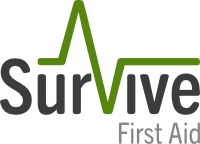ANZCOR Guideline 9.3.3 - Hypothermia

INTRODUCTION:
For normal function of most body systems and organs the human body’s temperature is kept controlled between narrow limits (about 37 deg.C). Hypothermia is when the body’s temperature is below 35 deg.C. As the body’s temperature falls, systems and organs progressively fail until death occurs, usually from cardiac arrest. Infants and elderly people are at greater risk. Hypothermia may develop acutely (eg: falling into icy water) or be a gradual and insidious process.
COMMON CAUSES:
- ENVIRONMENTAL: exposure to cold, wet, or windy conditions; cold water immersion/submersion; exhaustion.
- TRAUMA: trauma, immobility and burns.
- DRUGS: alcohol and / or sedatives.
- NEUROLOGICAL: stroke and altered consciousness.
- ENDOCRINE: impaired metabolism.
- SYSTEMIC ILLNESS: severe infections, malnutrition.
RECOGNITION:
-
Mild hypothermia:
- victim shivering,
- pale, cool skin,
- impaired coordination,
- slurred speech,
- responsive but with apathy or confusion.
-
Moderate to severe hypothermia:
- absence of shivering,
- increasing muscle stiffness,
- progressive decrease in consciousness,
- slow irregular pulse
- hypotension.
In more severe cases there may be dangerous cardiac arrhythmias and cardiac arrest, fixed dilated pupils. The victim may appear dead, particularly if they have a weak slow pulse.
MANAGEMENT
- Call an ambulance (Dial Triple Zero - 000).
- Remove from cold environment.
- General and supportive treatment with application of BLS where appropriate; this must continue until the victim is rewarmed.
- Remove sources of heat loss such as wet clothing, contact with cold surfaces and windy environment. Do not remove wet clothing if there is no dry blanket or other suitable cover. Apply insulation between body and the environment (eg. blanket).
- Dry the victim if wet.
- Give warm oral fluids (not alcohol) and only if the victim is fully conscious.
- If the victim is in a remote location and not shivering the rescuer should initiate active rewarming(1).
- Cautiously apply a source of external heat such as heat pack or body to body contact.
- To avoid burns ensure that any heat source is warm or tepid but not hot.
- Do not place the victim in a warm bath.
LEVEL OF EVIDENCE Level III
CLASS OF RECOMMENDATION Class A - Recommended
REFERENCES:
- First Aid Science Advisory Board. Part 10: First Aid. Circulation, 2005.112:115-125.
